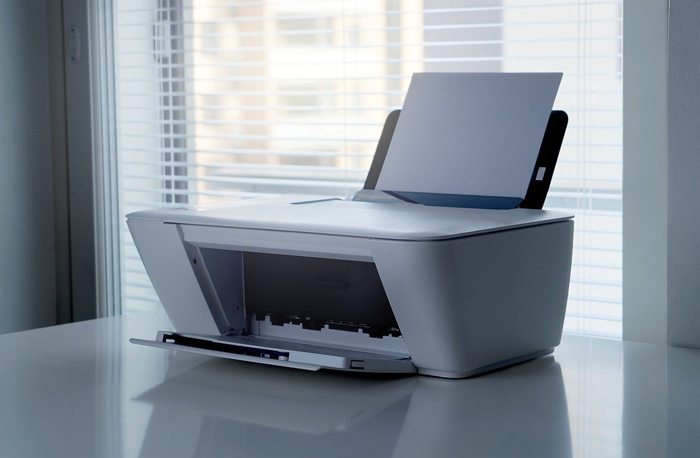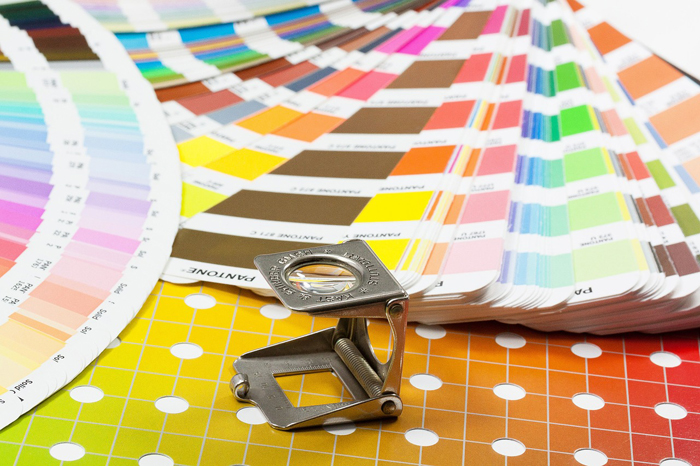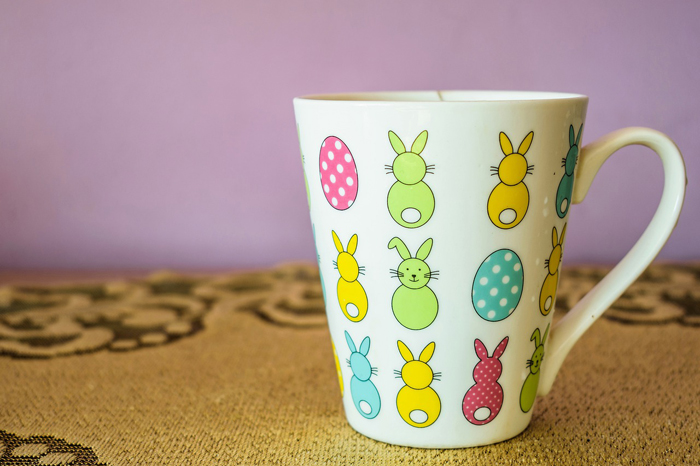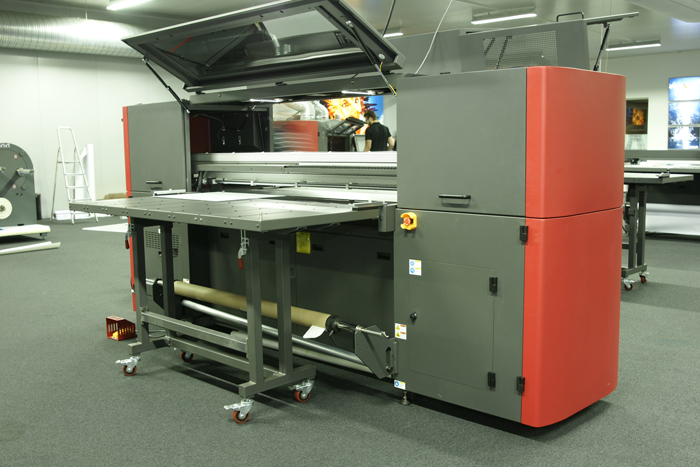What Resolution Do You Need to Make Prints of Your Art
To print artwork for exhibition purposes or selling online, you lot demand to exist able to achieve a quality of output that has a proper name: "giclée". The term is based on the French word gicleur, the French technical term for a jet or a nozzle. In curt, a giclée print requires an inkjet printer.
This article volition discuss suitable printers, but every bit giclée printers are quite expensive to buy, run, and maintain, it will as well cover what you tin achieve on a low upkeep and share some tips for outsourcing. However, y'all must always go with the highest quality you tin can afford if only because your art is supposed to make you money and not to ruin your reputation.
Today, giclée is associated with inkjet equipment that uses dye or pigment-based archival inks and archival media, aka substrates. The major vendors that have this equipment in their product portfolio are Canon, Epson and HP. Only printers that tin output to A2 media (at least 24 x xx inches) or bigger will deliver the required quality.
An office printer won't practice, mainly because you cannot properly linearize and color manage it. A photo printer that prints A3 format (or xvi x 12-inch paper) will — if you are willing to compromise on paper size and to some extent on quality too.
In a nutshell, you require:
- the highest output quality you can afford — for instance, when the specs mention an ink droplet size of 3.five picoliter, that'due south small plenty to ensure a very high resolution.
- the highest impress resolution available with the highest number of inks — a 2400 10 1200 dpi resolution, for case, and the use of six to x inks.
- inks that guarantee a high lightfastness (the degree at which colour ink is unaffected past light over time) and archival quality (permanence).
- a device that can print on a large range of materials, including cotton rag, high-gloss photo paper, satin paper, matte paper, canvas, film, vinyl, textile, etc.

The difference between printing at dwelling house and press professionally
All of the devices in the highest market niche are by definition PostScript-printers and best controlled through a Raster Prototype Processor (RIP), which is an app that lets you control the mode ink is fired from each individual printhead onto the media. That is important because:
- It saves money as you tin control the corporeality of ink sprayed onto the medium
- Information technology increases quality beyond what is possible using the printer driver
- It allows for very accurate color rendition
- With some printers, information technology enables increasing the length of the printable surface, saving money over again.
All of these printers must exist calibrated (aka linearization) before creating the colour profiles for the media y'all're going to use. This is the about important stride in the process considering it puts the printer in a known and stable state for each specific ink/media combination.
These preparations are inherent to professional printing, no affair the type of printer used by you lot or the professional you're outsourcing an output job to.
If you're starting out or are on a depression upkeep, you'll probably want to use a photo printer to impress your art, it even so is a proficient idea to utilize a RIP. But if you're working from a about-zero upkeep may you lot want to go with the printer manufacturer's printer driver. You'll take to give in on quality and particularly on control, though. That's fine as long every bit yous are aware of it and won't apply the resulting prints for whatever of import exhibition. It might then exist better to accept your art printed by a print-on-demand service or even a local printer.

Press yourself
To impress artwork, you lot will ideally be working in the CMYK color space because you cannot rely on the manufacturer's printer drivers and color profiles to attain accurate color rendition and total control over the ink on the substrate. This means you lot will need to invest a bit of money in a practiced, genuine Raster Prototype Processor. Pseudo-RIPs exist too, but these rely on the printer driver and aren't useful. A relatively inexpensive but decent, convenient RIP is EFI'south Fiery RIP, which a large number of vendors utilise in their high-volume production machines. Other RIPs are usually much more than hard to utilise than EFI's Fiery.
The printer y'all'll want to buy for exhibition prints is a large format inkjet printer.
The printer/RIP combo will set you back between 1300 and xi,000 U.s.a. dollars, depending on the size of the output, the resolution and the machine'due south capabilities — for, example, some printers incorporate a paper cutter.
Running your own printer implies that y'all will accept to maintain the printer yourself. Setting upwardly a printer in CMYK manner involves linearizing the printer and creating print/color profiles for every different substrate you decide to print on. You will need to repeat that process with each new ink and media batch y'all buy.
You lot can often purchase or download generic color profiles for the printer/media combination y'all apply, but as every production batch of ink and paper or canvas differs slightly, y'all will ever get somewhat off-colour results using those.

When you lot're starting, are on a tight upkeep or still testing the waters, you should go along this in the back of your mind.
For true exhibition quality, you volition also demand to invest in a spectrophotometer. Currently, the only professional one that is affordable is the Ten-Rite i1Pro.
If you're starting out or on a budget, you tin can practice with a Datacolor kit. That won't deliver the same accurateness as X-Rite'south gear but will be less expensive. If you take coin to spare, invest in X-Rite's i1iO, a robotic, automatic chart reading system designed for photographers, designers and printers who want to eliminate manual strip reading. The i1iO does the job in minutes whereas transmission strip reading tin be very frustrating and take forever.
If you want to also print your artwork on mugs, dress and other iii-dimensional products, you tin purchase a oestrus printing (take a look at this Amazon page, for example) merely they are unwieldy and tedious to use. For that type of printing, it's probably meliorate to outsource your work.
Outsourcing the printing process
As a starting artist or when yous're on a tight budget, yous might consider outsourcing your printing needs to a print-on-demand (POD) service provider. You don't have to invest in equipment, you don't have to learn to manage a professional person printer and yous still tin can get good quality for simply a slightly higher price per impress than when you do it all by yourself. For showcasing your work at important art exhibitions, nonetheless, I would advise confronting POD services as it so becomes really important to control the entire process.
When hiring a POD service, such every bit Printify and Kyte.li, you supply the files in a print-gear up format to the printer'southward specifications and they print out your artwork. Yous can and so sell your printed materials online, using a range of east-commerce service providers.
The initial workflow with a POD service is very shut to working with a professional printer, which is another alternative if you detect one who is knowledgeable and helpful. However, seeking help from a local printer is jump to be more expensive, just, depending on the printer'southward willingness, volition let you to instruct the press press operator during proofing/printing.
Some online art sales services have in-firm printing facilities or outsource the printing function themselves. For example, Society6 fulfills, prints, and ships your orders internationally. Not only do they print on sheets of paper, textile and canvas, they also print on 3D objects such as mugs and iPhone cases.

Bones introduction of unlike press types
Which types of printers to print artwork are in that location, anyway?
The large-format inkjet. It uses print heads that contain tiny nozzles. The nozzles, when excited, squirt a microscopically small drop of ink on the substrate. Printers that can handle 24-inch wide substrates are chosen large-format printers.
Minor photo and role inkjet printers are inkjet printers, just they have as well few nozzles, no advanced droplet technology and, in general, are not suitable to be controlled by a RIP. They are not very skillful at printing artwork, except for lower quality prints.
Large photograph printers differ from small photo printers in size and quality. Every bit size increases, so does the toll of the equipment and it becomes assisting for manufacturers to include more features.
Most UV-curable inkjets again are inkjets, just these are massive industrial printing presses that ready the ink to the medium past "curing" with UV light. They're excellent for signage, banners and big panels.

A dye-sublimation printer uses solid ink that must be heated earlier information technology can be deposited onto a medium. The ink, one time dried, has a bit of a wax feel to it and is permanent. These printers tin can exist used for printing on mugs, apparel and metal.
Color light amplification by stimulated emission of radiation printers are extremely difficult to color manage and RIPs aren't bachelor for them. Colour toner is neither permanent nor lightfast. Laser printers tin simply handle newspaper.
Heat printing machines are not printers per se. They are used to utilise heat transfers (colored sheets of a synthetic resin or plastic such as vinyl) onto garments, mugs, and glasses using temperature and pressure level.
Printer Recommendations
Epson's A2 model, the SureColor SC-P800, has a minimum ink droplet size of 3.five picoliter and Variable Droplet Technology that can produce up to three dissimilar droplet sizes per print line at a very loftier resolution.
The HP DesignJet Z9 has a 2400 ten 1200 resolution of optimized dpi and uses nine inks (cyan, magenta, yellow, matte black, photo black, chromatic red, chromatic green, chromatic blue and grey) with an option to install a gloss enhancer.
For aspiring artists on a tight budget, Canon'south A3+ Pixma Pro-100S Mk II offers a adept printer with a high resolution at 4800 x 1200 dpi, eight colors and ChromaLife100 inks for a toll of around 500 dollars. For that price, you'll also get good ink permanence and the possibility to run the printer with a RIP. Even with a RIP, you won't be able to print on sizes of media that extends beyond the printer'southward specs as you would with other printers, though, but that'due south a minor disadvantage.
What to look for in a printing vendor and how to bank check the quality of a print
Before entrusting a print vendor with your work, you should read some user experiences by googling them and looking up comments on their service. If that is satisfactory, transport them a test file, preferably one that will give you an idea well-nigh the color accuracy and the quality of line (east.thousand. jaggies) they tin can output.
Wait for registration errors — that's when you can see edges with misaligned colors. If there are any, it means either the equipment is desperately maintained, old, or the operators don't know their task. For mugs and other 3D objects, check the ink's resistance to abrasives, detergents, and scratches.
Making sure your art is impress-prepare
Output your art to 300 dpi or college (300dpi is giclée quality), or per the printer'due south or POD service'due south instructions.
Raster images (JPEG, TIFF, PNG) are made up of pixels and cannot be enlarged without introducing pixelation. Vector art tin can exist resized at will.
If yous relieve your file in vector format, you can consign information technology to a raster file of the exact required size in a format such as TIFF and repeat that for different sizes afterwards — TIFF is what most printers tin can impress.
When printing with a RIP, catechumen your fine art to CMYK and check that your conversion settings are correct. You should always cheque your very starting time impress — the proof — for color accuracy. If y'all're using your printer, you'll need to print a control strip in the margin and bank check it with your spectrophotometer. You'll also need to check the ink density, again using your spectrophotometer (or a dedicated density meter).
When working with a POD service or vendor, or with your local print shop, you should colour match your artwork using the color contour of the press device they'll be using to output your file, and then through your software'due south color management features correct for colour shifts.
Common factors that prevent a file from beingness print-ready include:
- File in the wrong format.
- Document sized improperly.
- Colors gear up to the wrong colour space; e.g. RGB instead of CMYK.
- Errors involving margins.
- Resolution not loftier plenty.
Where and how to sell art prints
When you've successfully printed your artwork, information technology's probably time to let it exist juried or offer it for auction. You can practise both online. Below are some examples in each category.
Art competitions/events
Art Show
Artists Network
CGTrader Digital Art Contest
Lumen Prize
World Illustration Awards
Order of Illustrators
Sunny Art Prize
ArtStation (Concept art)
Concept Fine art World competitions folio
Animation Festivals
Stem Challenge
Sites that offering a total service from printing to selling
Bonfire
RedBubble
Society6
Zazzle
Spreadshirt
Design past Hümans
Fine Art America
Sites that offer merchant and/or POD services
Merchify
Estrus Printing Fun
CG Pro Prints
Displate
Sites that offer shopping services but
Etsy
Artpal
Most Erik Vlietinck
Erik Vlietinck became an independent writer and sub-editor thirty years ago, creating high-quality content in English and Dutch. He is familiar with industrial press, video, and sound production on the Mac platform, likewise equally graphics design, digital publishing, color management, and more. As a journalist/reviewer, Erik contributes to a number of US- and UK-based publications, while serving Fortune 500 companies and SMEs worldwide as a technical copywriter. He is a swell amateur of pencil drawing and painting with acrylic media and has had some of his artwork exhibited in his native city Antwerp.
twitter.com/AgileCreator
visualsproducer.wordpress.com
christianprolemare.blogspot.com
Source: https://www.clipstudio.net/how-to-draw/archives/157630
0 Response to "What Resolution Do You Need to Make Prints of Your Art"
Enregistrer un commentaire